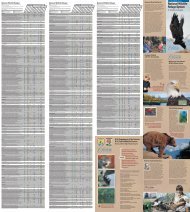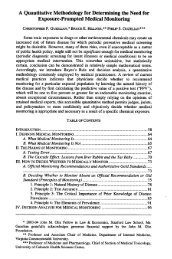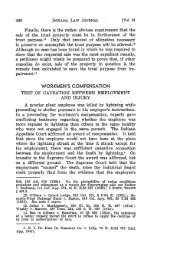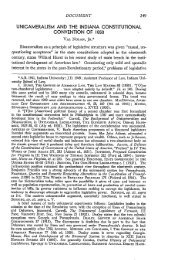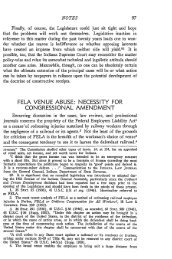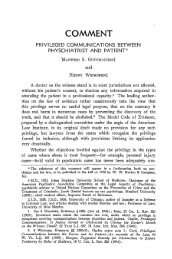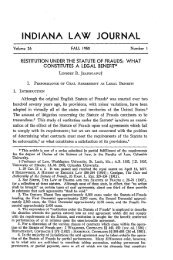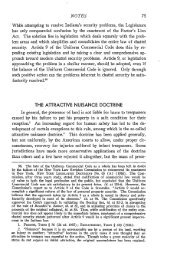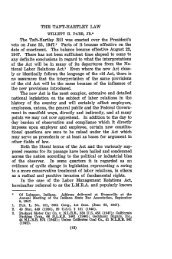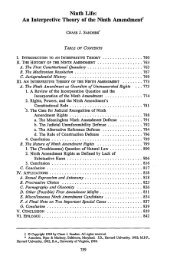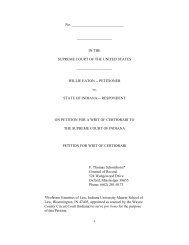Federal Land Transaction Facilitation Act Restrictions and ...
Federal Land Transaction Facilitation Act Restrictions and ...
Federal Land Transaction Facilitation Act Restrictions and ...
You also want an ePaper? Increase the reach of your titles
YUMPU automatically turns print PDFs into web optimized ePapers that Google loves.
Accountability Integrity Reliability<br />
Highlights<br />
Highlights of GAO-08-196, a report to<br />
congressional requesters<br />
Why GAO Did This Study<br />
The U.S. Department of the<br />
Interior’s Bureau of <strong>L<strong>and</strong></strong><br />
Management (BLM), Fish <strong>and</strong><br />
Wildlife Service, <strong>and</strong> National Park<br />
Service, <strong>and</strong> the U.S. Department of<br />
Agriculture’s Forest Service<br />
manage about 628 million acres of<br />
public l<strong>and</strong>, mostly in the 11<br />
western states <strong>and</strong> Alaska. Under<br />
the <strong>Federal</strong> <strong>L<strong>and</strong></strong> <strong>Transaction</strong><br />
<strong>Facilitation</strong> <strong>Act</strong> (FLTFA), revenue<br />
raised from selling BLM l<strong>and</strong>s is<br />
available to the agencies, primarily<br />
to acquire nonfederal l<strong>and</strong> within<br />
the boundaries of l<strong>and</strong> they already<br />
own—known as inholdings, which<br />
can create significant l<strong>and</strong><br />
management problems. To acquire<br />
l<strong>and</strong>, the agencies can nominate<br />
parcels under state-level<br />
interagency agreements or the<br />
Secretaries can use their discretion<br />
to initiate acquisitions. FLTFA<br />
expires in 2010.<br />
GAO was asked to determine (1)<br />
FLTFA revenue generated, (2)<br />
challenges to future sales, (3)<br />
FLTFA expenditures, <strong>and</strong> (4)<br />
challenges to future acquisitions.<br />
To address these issues, GAO<br />
interviewed officials <strong>and</strong> examined<br />
the act, agency guidance, <strong>and</strong><br />
FLTFA sale <strong>and</strong> acquisition data.<br />
What GAO Recommends<br />
If Congress decides to reauthorize<br />
FLTFA, GAO recommends that it<br />
consider including additional l<strong>and</strong>s<br />
for sale <strong>and</strong> greater flexibility for<br />
acquisitions. GAO also<br />
recommends that the agencies take<br />
actions to better manage the<br />
FLTFA program. Interior generally<br />
concurred with GAO’s findings <strong>and</strong><br />
recommendations; Agriculture<br />
made no comment.<br />
To view the full product, including the scope<br />
<strong>and</strong> methodology, click on GAO-08-196.<br />
For more information, contact Robin M.<br />
Nazzaro at (202) 512-3841 or<br />
nazzaror@gao.gov.<br />
February 2008<br />
FEDERAL LAND MANAGEMENT<br />
<strong>Federal</strong> <strong>L<strong>and</strong></strong> <strong>Transaction</strong> <strong>Facilitation</strong> <strong>Act</strong> <strong>Restrictions</strong><br />
<strong>and</strong> Management Weaknesses Limit Future Sales <strong>and</strong><br />
Acquisitions<br />
What GAO Found<br />
Since FLTFA was enacted in 2000, through May 2007 BLM has raised $95.7<br />
million in revenue, mostly from selling about 17,000 acres. About 92 percent<br />
of the revenue raised, or $88 million, has come from l<strong>and</strong> transactions in<br />
Nevada—1 of the 11 western states. Nevada accounts for the lion’s share of<br />
the sales because of a rapidly exp<strong>and</strong>ing population, plentiful BLM l<strong>and</strong>, <strong>and</strong><br />
experience with federal l<strong>and</strong> sales in southern Nevada. Most BLM field offices<br />
have not generated sales revenue under FLTFA.<br />
BLM faces several challenges to raising revenue through future FLTFA sales.<br />
In particular, BLM state <strong>and</strong> field officials most frequently cited the limited<br />
availability of knowledgeable realty staff to conduct the sales. These staff are<br />
often not available because they are working on higher priority activities, such<br />
as reviewing <strong>and</strong> approving energy rights-of-way. We identified two additional<br />
issues hampering l<strong>and</strong> sales activity under FLTFA. First, while BLM has<br />
identified l<strong>and</strong> for sale in its l<strong>and</strong> use plans, it has not made the sale of this<br />
l<strong>and</strong> a priority during the first 7 years of the program. Furthermore, BLM has<br />
not set goals for sales or developed a sales implementation strategy. Second,<br />
GAO found that some of the additional l<strong>and</strong> BLM has identified for sale since<br />
FLTFA was enacted would not generate revenue for acquisitions because the<br />
act only allows the deposit of revenue from the sale of l<strong>and</strong>s identified for<br />
disposal on or before the date of the act.<br />
The four l<strong>and</strong> management agencies have spent $13.3 million of the $95.7<br />
million in revenue raised under FLTFA: $10.1 million using the Secretaries’<br />
discretion to acquire nine parcels of l<strong>and</strong> <strong>and</strong> $3.2 million for administrative<br />
expenses to prepare l<strong>and</strong> for FLTFA sales. The agencies acquired the l<strong>and</strong><br />
between August 2007 <strong>and</strong> January 2008—more than 7 years after FLTFA was<br />
enacted, <strong>and</strong> BLM spent the administrative funds between 2000 <strong>and</strong> 2007,<br />
primarily for preparing FLTFA sales in Nevada. As of October 2007, no l<strong>and</strong><br />
had been purchased through the state-level interagency nomination process,<br />
which the agencies envisioned as the primary mechanism for acquiring l<strong>and</strong>.<br />
Agencies face several challenges to completing future l<strong>and</strong> acquisitions under<br />
FLTFA. Most notably, the act requires that the agencies use most of the funds<br />
to purchase l<strong>and</strong> in the state in which the funds were raised; this restriction<br />
has had the effect of making little revenue available for acquisitions outside of<br />
Nevada. Furthermore, progress in acquiring priority l<strong>and</strong>s has been hampered<br />
by weak agency performance in identifying inholdings <strong>and</strong> setting priorities<br />
for acquiring them, as required by the act. In addition, GAO found that the<br />
agencies have not established procedures to track implementation of the act’s<br />
requirement that at least 80 percent of FLTFA revenue raised in each state be<br />
used to acquire inholdings in that state or the extent to which BLM is<br />
complying with agreed-upon fund allocations among the four participating<br />
agencies. Of the revenue generated by FLTFA sales, the agencies have agreed<br />
to allocate 60 percent to BLM, 20 percent to the Forest Service, <strong>and</strong> 10 percent<br />
each to the Fish <strong>and</strong> Wildlife Service <strong>and</strong> the Park Service.<br />
United States Government Accountability Office



